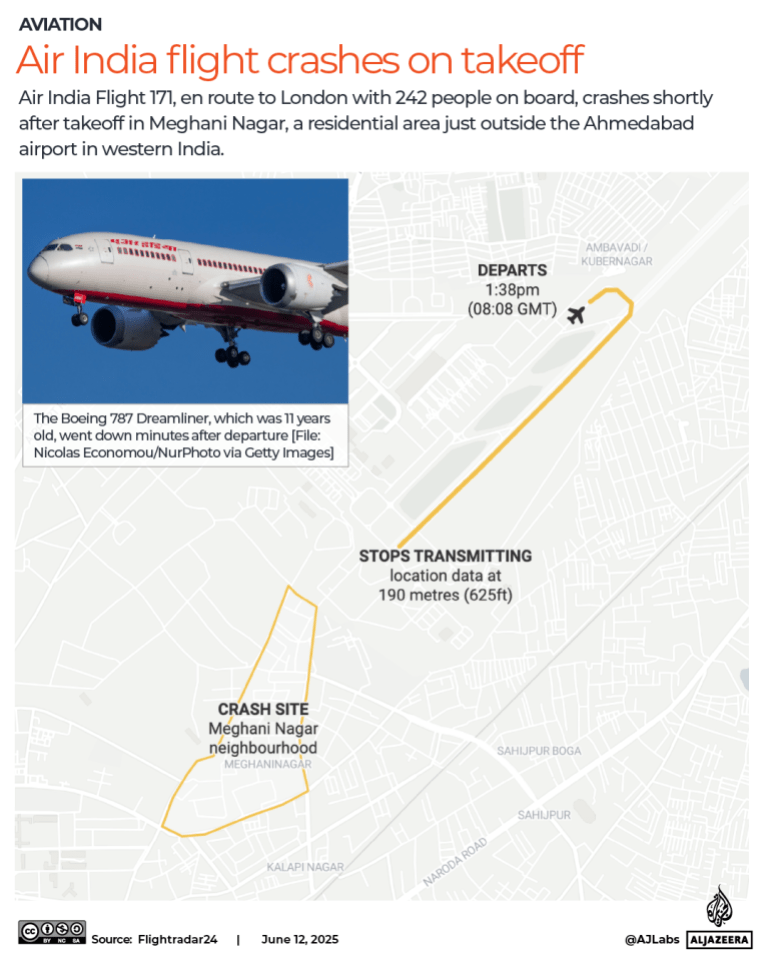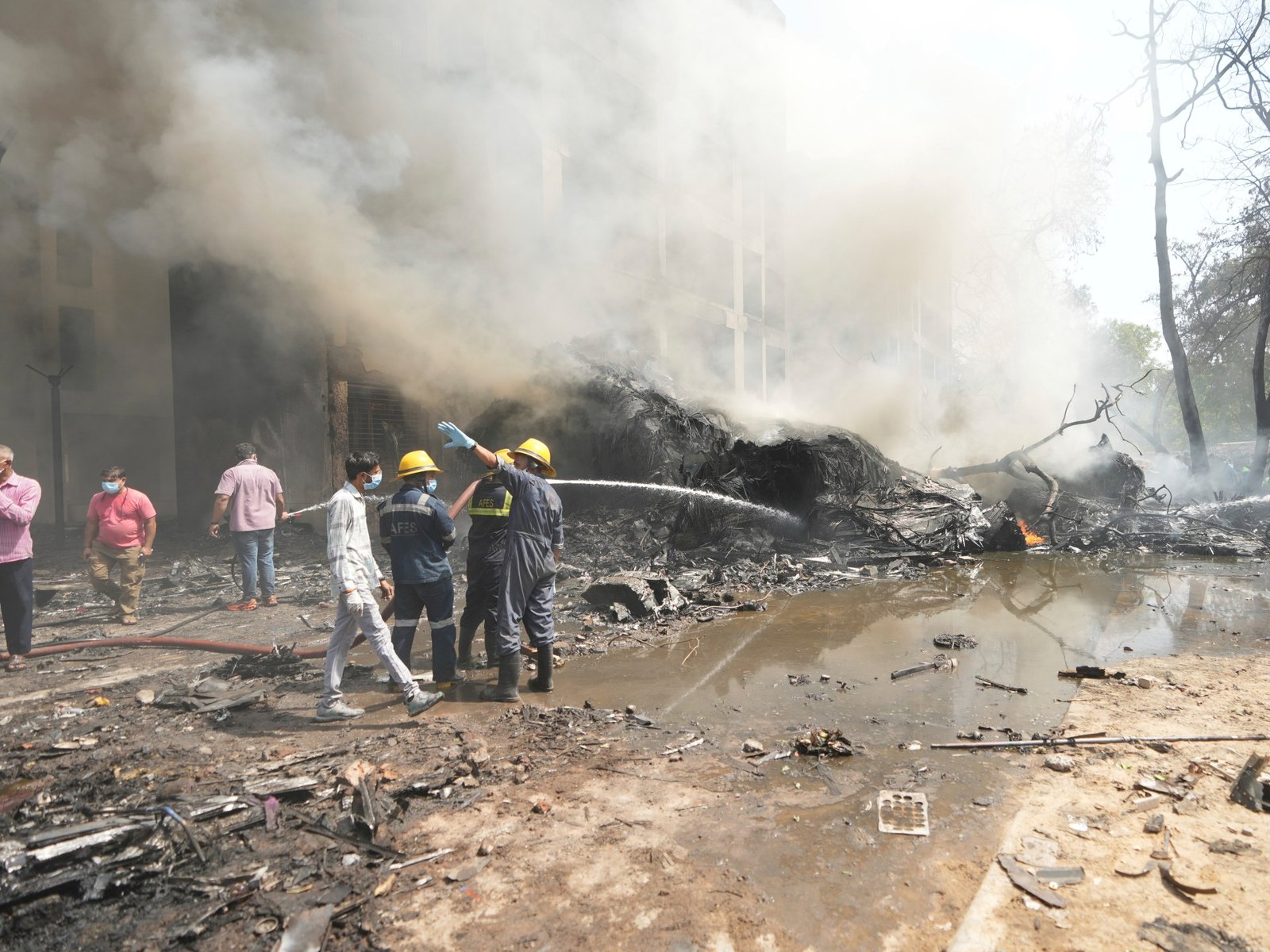In a tragic incident near Ahmedabad, India, a Boeing 787 Dreamliner operated by Air India crashed shortly after takeoff, bound for London Gatwick Airport. This calamity has reignited intense scrutiny towards both Boeing and Air India, two companies striving to recover from a series of crises and reputational damage.
The nearly 12-year-old aircraft went down in a densely populated area on Thursday, resulting in the deaths of 241 out of 242 individuals on board. The toll could rise further due to the plane’s impact on a medical college hostel, as rescue efforts are still ongoing.
This disaster amplifies concerns regarding Boeing’s safety record, which has suffered from various public trust issues. Compounding these worries are economic challenges from tariffs imposed by the U.S. government and increased regulatory oversight stemming from previous incidents.
The cause of the crash remains unknown, contributing to the growing list of accidents involving Boeing aircraft that have left travelers uneasy about flying with the brand.
“Boeing’s name now elicits fear among passengers, irrespective of the aircraft model. The very mention of ‘Boeing’ can create anxiety,” stated Adnan Bashir, a global communications consultant specializing in crisis management.
Boeing’s safety reputation began to decline sharply in October 2018 when a Lion Air flight utilizing the 737 MAX crashed due to a malfunction in the Maneuvering Characteristics Augmentation System (MCAS), claiming all 189 lives aboard. This was followed by another similar incident involving Ethiopian Airlines in March 2019, where 157 passengers lost their lives.
Another episode of turmoil emerged in January 2024, when a door panel detached during a flight operated by Alaska Airlines, raising further safety alarms.
Until this accident, the 787 Dreamliner had maintained a commendable safety record. “This is the first fatal incident involving the 787, which had previously enjoyed a reputation for safety despite early production challenges,” remarked aviation expert Scott Hamilton.
Since its debut in 2011, Boeing has sold over 2,500 Dreamliners globally, with Air India acquiring 47 units. Up to now, Boeing has delivered 1,189 of the aircraft.
However, the Dreamliner model has faced ongoing scrutiny over safety. In 2024, John Barnett, a former Boeing quality manager, was found dead under questionable circumstances after expressing concerns about production practices, including alleged compromises on safety. He claimed that emergency oxygen systems had a 25% failure rate in tests.
In 2019, The New York Times published a report detailing how Boeing pressured its workforce not to disclose safety violations, reinforced by internal emails and testimonies from employees. More recently, whistleblower Sam Salehpour alleged he faced threats for raising safety concerns.

This crash marks the latest in a string of tragedies occurring under Boeing CEO Kelly Ortberg, who returned from retirement in 2024 to restore the company’s tarnished reputation.
The last incident occurred in December, when a Jeju Airlines flight was downed by a bird strike, leading to 179 fatalities. Earlier this month, Boeing settled with the U.S. Department of Justice, avoiding prosecution for prior crashes but agreeing to pay $1.1 billion for safety improvements and victim compensation.
Boeing’s stock saw a nearly 5% reduction in value following the news, while experts anticipate that executives will tread carefully in public communications, given potential legal ramifications from the ongoing investigation.
“Anticipate lawsuits. Boeing’s executives are likely coordinating their messaging closely with legal counsel to avoid making statements that could be used in legal proceedings. Silence may be the best strategy until more facts are established,” noted Amanda Orr, founder of Orr Strategy Group.
In response to the crash, Boeing expressed condolences and stated, “We are in touch with Air India regarding Flight 171 and stand ready to assist. Our thoughts are with everyone affected.” Boeing has yet to engage further with the media.
A Setback for Air India’s Reinvention
For Air India, currently undergoing significant transformation, the crash is a considerable setback in its efforts to modernize and enhance its image.
Founded in 1932, Air India became a nationalized entity in 1953. After enduring financial hardships and accumulating debt, Tata Group acquired the airline for $2.2 billion in 2022.
As India’s sole long-haul international carrier to Europe and North America, Air India plays a vital role in global travel. In 2023, the airline placed a massive order for 220 Boeing aircraft, comprising 20 Dreamliners, 10 777x jets, and 190 of the contentious 737 MAX series.
For now, Air India’s primary objective is supporting those affected by the tragic incident. “Our focus is on assisting all impacted individuals and their families while providing full cooperation to emergency responders,” stated N Chandrasekaran, chairperson of Tata Sons.
“This is a difficult day for everyone at Air India. Our attention is firmly on the needs of passengers, crew members, and their families,” added Craig Wilson, the airline’s CEO, in a video address.
Air India has faced its share of accidents in recent years. Notably, a 2020 incident involving an Air India Express flight resulted in 20 fatalities when the aircraft skidded off the runway in Kozhikode, India. A similar mishap in Mangalore involving a 737-800 led to the loss of 156 lives.
Despite the shock from today’s tragedy, aviation remains one of the safest modes of transportation, with a 2024 MIT study indicating the risk of dying in a commercial airline accident is one in 13.7 million passengers, marking this as one of the safest decades in aviation history.

